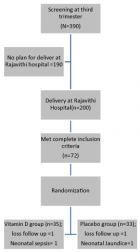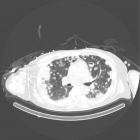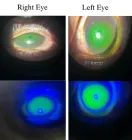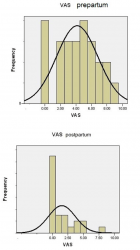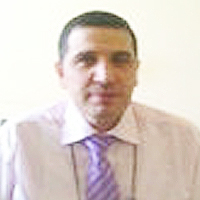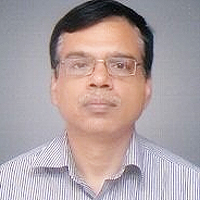Abstract
Research Article
Environmental PM2.5, Physical Activity Levels, and Aerobic Capacity, of Smokers and Non-Smokers
Mayank Shukla* and Sakshi Bansal
Published: 27 July, 2023 | Volume 4 - Issue 2 | Pages: 057-062
Aerobic capacity of young men (19 years - 24 years) is high, but can be influenced by many factors like physical activity, smoking, and air pollution with environmental PM 2.5.
Objectives: (a) - to estimate the aerobic capacity in young men (smokers and non-smokers) living in areas with higher PM 2.5 using Queen’s College Step Test (QCT). (b) - to find whether aerobic capacity is associated with the International Physical Activity Questionnaire (IPAQ)’ three classes, for smokers and non-smokers.
Methods: In a cross-sectional study using criteria-based sampling a total of N = 60 smokers & non-smokers were included from the Delhi NCR region. IPAQ, Peak Expiratory Flow Rate (PEFR), Heart Rate, Systolic Blood Pressure, Diastolic Blood Pressure, and PM 2.5 and PM 10 levels were recorded. A comparison of smokers and non-smokers was performed using z test. Smokers and non-smokers were divided into three classes using physical activity levels and compared for aerobic capacity. The correlation of aerobic capacity with variables was seen using Pearson’s correlation coefficient. Multiple R was checked to study the model of cause and effect for aerobic capacity.
Results: Significant difference is seen between smokers and non-smokers in the aerobic capacity (Mean ± SD smokers - 65.22 ± 8.73 ml/kg/min; Mean ± SD non-smokers 60.04 ± 7.7 ml/kg/min p value = 0.00). For non-smokers, a low level of physical activity shows a strong correlation with aerobic capacity (r = 0.78; p = < 0.05). No correlation of aerobic capacity is seen with physical activity levels among smokers. Aerobic capacity shows a significant negative and moderate correlation with PM 2.5 (r = -3.1; p = 0.016). The multiple R coefficient value for the model of cause and effect is 6.99 with a p - value of 0.0449 for this.
Conclusion: Smoking affects aerobic capacity significantly for young men. High and moderate levels of outdoor physical activity do not increase aerobic capacity in areas with high PM 2.5, whereas low levels show a positive correlation among non-smokers only.
Read Full Article HTML DOI: 10.29328/journal.jcmhs.1001036 Cite this Article Read Full Article PDF
Keywords:
Environmental PM 2.5; VO2; Urban atmosphere; Fitness; Physical activity
References
- World Health Organization. News Room. Facts-sheets, details, tobacco. https://www.who.int/news-room/fact-sheets/detail/tobacco accessed on 19.11.2019
- Lim HK, Ghazali SM, Kee CC, Lim KK, Chan YY, Teh HC, Yusoff AF, Kaur G, Zain ZM, Mohamad MH, Salleh S. Epidemiology of smoking among Malaysian adult males: prevalence and associated factors. BMC Public Health. 2013 Jan 7;13:8. doi: 10.1186/1471-2458-13-8. PMID: 23294728; PMCID: PMC3549287.
- Barboza ML, Barbosa AC, Spina GD, Sperandio EF, Arantes RL, Gagliardi AR, Romiti M, Dourado VZ. Association between physical activity in daily life and pulmonary function in adult smokers. J Bras Pneumol. 2016 Apr;42(2):130-5. doi: 10.1590/S1806-37562015000000102. PMID: 27167434; PMCID: PMC4853066.
- Delhi Air Pollution. Real-time air quality index. https://aqicn.org/city/delhi/ downloaded on 15.11.2019. (The Data sources used for the Air Quality, Air Pollution, PM2.5 (fine particulate matter), PM10 (respirable particulate matter), NO2 (nitrogen dioxide), SO2 (sulfur dioxide), CO (carbon monoxide), O3 (ozone) and Weather data in this page are coming from: Citizen Weather Observer Program (CWOP/APRS), IMD - India Meteorological Department, CPCB - India Central Pollution Control Board, Delhi Pollution Control Committee (Government of NCT of Delhi)
- Goyal P, Gulia S, Goyal SK, Kumar R. Assessment of the effectiveness of policy interventions for Air Quality Control Regions in Delhi city. Environ Sci Pollut Res Int. 2019 Oct;26(30):30967-30979. doi: 10.1007/s11356-019-06236-1. Epub 2019 Aug 26. PMID: 31452124.
- Li F, Liu Y, Lü J, Liang L, Harmer P. Ambient air pollution in China poses a multifaceted health threat to outdoor physical activity. J Epidemiol Community Health. 2015 Mar;69(3):201-4. doi: 10.1136/jech-2014-203892. Epub 2014 Jun 26. PMID: 24970766; PMCID: PMC4514977.
- Bos I, De Boever P, Int Panis L, Meeusen R. Physical activity, air pollution and the brain. Sports Med. 2014 Nov;44(11):1505-18. doi: 10.1007/s40279-014-0222-6. PMID: 25119155.
- Lin H, Guo Y, Di Q, Zheng Y, Kowal P, Xiao J, Liu T, Li X, Zeng W, Howard SW, Nelson EJ, Qian Z, Ma W, Wu F. Ambient PM5and Stroke: Effect Modifiers and Population Attributable Risk in Six Low- and Middle-Income Countries. Stroke. 2017 May;48(5):1191-1197. doi: 10.1161/STROKEAHA.116.015739. Epub 2017 Apr 6. PMID: 28386038; PMCID: PMC5535267.
- Laukkanen JA, Laaksonen D, Lakka TA, Savonen K, Rauramaa R, Mäkikallio T, Kurl S. Determinants of cardiorespiratory fitness in men aged 42 to 60 years with and without cardiovascular disease. Am J Cardiol. 2009 Jun 1;103(11):1598-604. doi: 10.1016/j.amjcard.2009.01.371. Epub 2009 Apr 22. PMID: 19463522.
- McGuire KA, Ross R. Incidental physical activity is positively associated with cardiorespiratory fitness. Med Sci Sports Exerc. 2011 Nov;43(11):2189-94. doi: 10.1249/MSS.0b013e31821e4ff2. Erratum in: Med Sci Sports Exerc. 2012 Mar;44(3):562. PMID: 21502894.
- Pope CA 3rd, Dockery DW. Health effects of fine particulate air pollution: lines that connect. J Air Waste Manag Assoc. 2006 Jun;56(6):709-42. doi: 10.1080/10473289.2006.10464485. PMID: 16805397.
- Venkataraman C, Brauer M, Tibrewal K, Sadavarte P, Ma Q, Cohen A, Chaliyakunnel S, Frostad J, Klimont Z, Martin RV, Millet DB, Philip S, Walker K, Wang S. Source influence on emission pathways and ambient PM5pollution over India (2015-2050). Atmos Chem Phys. 2018 Jun;18(11):8017-8039. doi: 10.5194/acp-18-8017-2018. Epub 2018 Jun 7. PMID: 33679902; PMCID: PMC7935015.
- Lee PH, Macfarlane DJ, Lam TH, Stewart SM. Validity of the International Physical Activity Questionnaire Short Form (IPAQ-SF): a systematic review. Int J Behav Nutr Phys Act. 2011 Oct 21;8:115. doi: 10.1186/1479-5868-8-115. PMID: 22018588; PMCID: PMC3214824.
- Chatterjee S, Chatterjee P, Mukherjee PS, Bandyopadhyay A. Validity of Queen's College step test for use with young Indian men. Br J Sports Med. 2004 Jun;38(3):289-91. doi: 10.1136/bjsm.2002.002212. PMID: 15155428; PMCID: PMC1724834.
- Tager IB, Hollenberg M, Satariano WA. Association between self-reported leisure-time physical activity and measures of cardiorespiratory fitness in an elderly population. Am J Epidemiol. 1998 May 15;147(10):921-31. doi: 10.1093/oxfordjournals.aje.a009382. PMID: 9596470.
- Pedersen BK, Saltin B. Evidence for prescribing exercise as therapy in chronic disease. Scand J Med Sci Sports. 2006 Feb;16 Suppl 1:3-63. doi: 10.1111/j.1600-0838.2006.00520.x. PMID: 16451303.
- Rowland TW. Circulatory responses to exercise: are we misreading Fick? Chest. 2005 Mar;127(3):1023-30. doi: 10.1378/chest.127.3.1023. PMID: 15764789.
- Rowland T. Echocardiography and circulatory response to progressive endurance exercise. Sports Med. 2008;38(7):541-51. doi: 10.2165/00007256-200838070-00002. PMID: 18557657.
- Naeije R, Chesler N. Pulmonary circulation at exercise. Compr Physiol. 2012 Jan;2(1):711-41. doi: 10.1002/cphy.c100091. PMID: 23105961; PMCID: PMC3480234.
- Raven PB, Drinkwater BL, Ruhling RO, Bolduan N, Taguchi S, Gliner J, Horvath SM. Effect of carbon monoxide and peroxyacetyl nitrate on man's maximal aerobic capacity. J Appl Physiol. 1974 Mar;36(3):288-93. doi: 10.1152/jappl.1974.36.3.288. PMID: 4814294.
- Reid CE, Brauer M, Johnston FH, Jerrett M, Balmes JR, Elliott CT. Critical Review of Health Impacts of Wildfire Smoke Exposure. Environ Health Perspect. 2016 Sep;124(9):1334-43. doi: 10.1289/ehp.1409277. Epub 2016 Apr 15. PMID: 27082891; PMCID: PMC5010409.
- Lelieveld J, Haines A, Pozzer A. Age-dependent health risk from ambient air pollution: a modelling and data analysis of childhood mortality in middle-income and low-income countries. Lancet Planet Health. 2018 Jul;2(7):e292-e300. doi: 10.1016/S2542-5196(18)30147-5. PMID: 30074892.
- Lelieveld J, Klingmüller K, Pozzer A, Pöschl U, Fnais M, Daiber A, Münzel T. Cardiovascular disease burden from ambient air pollution in Europe reassessed using novel hazard ratio functions. Eur Heart J. 2019 May 21;40(20):1590-1596. doi: 10.1093/eurheartj/ehz135. PMID: 30860255; PMCID: PMC6528157.
- Bowler DE, Buyung-Ali LM, Knight TM, Pullin AS. A systematic review of evidence for the added benefits to health of exposure to natural environments. BMC Public Health. 2010 Aug 4;10:456. doi: 10.1186/1471-2458-10-456. PMID: 20684754; PMCID: PMC2924288.
- Thompson Coon J, Boddy K, Stein K, Whear R, Barton J, Depledge MH. Does participating in physical activity in outdoor natural environments have a greater effect on physical and mental wellbeing than physical activity indoors? A systematic review. Environ Sci Technol. 2011 Mar 1;45(5):1761-72. doi: 10.1021/es102947t. Epub 2011 Feb 3. PMID: 21291246.
- James P, Banay RF, Hart JE, Laden F. A Review of the Health Benefits of Greenness. Curr Epidemiol Rep. 2015 Jun;2(2):131-142. doi: 10.1007/s40471-015-0043-7. PMID: 26185745; PMCID: PMC4500194.
- Gualtieri M, Ovrevik J, Mollerup S, Asare N, Longhin E, Dahlman HJ, Camatini M, Holme JA. Airborne urban particles (Milan winter-PM2.5) cause mitotic arrest and cell death: Effects on DNA, mitochondria, AhR binding and spindle organization. Mutat Res. 2011 Aug 1;713(1-2):18-31. doi: 10.1016/j.mrfmmm.2011.05.011. Epub 2011 May 30. PMID: 21645525.
- Kulshrestha A, Satsangi PG, Masih J, Taneja A. Metal concentration of PM(2.5) and PM(10) particles and seasonal variations in urban and rural environment of Agra, India. Sci Total Environ. 2009 Dec 1;407(24):6196-204. doi: 10.1016/j.scitotenv.2009.08.050. Epub 2009 Sep 29. PMID: 19793609.
- Stone V, Miller MR, Clift MJD, Elder A, Mills NL, Møller P, Schins RPF, Vogel U, Kreyling WG, Alstrup Jensen K, Kuhlbusch TAJ, Schwarze PE, Hoet P, Pietroiusti A, De Vizcaya-Ruiz A, Baeza-Squiban A, Teixeira JP, Tran CL, Cassee FR. Nanomaterials Versus Ambient Ultrafine Particles: An Opportunity to Exchange Toxicology Knowledge. Environ Health Perspect. 2017 Oct 10;125(10):106002. doi: 10.1289/EHP424. PMID: 29017987; PMCID: PMC5933410.
- Huang YW, Cambre M, Lee HJ. The Toxicity of Nanoparticles Depends on Multiple Molecular and Physicochemical Mechanisms. Int J Mol Sci. 2017 Dec 13;18(12):2702. doi: 10.3390/ijms18122702. PMID: 29236059; PMCID: PMC5751303.
- Meldrum K, Guo C, Marczylo EL, Gant TW, Smith R, Leonard MO. Mechanistic insight into the impact of nanomaterials on asthma and allergic airway disease. Part Fibre Toxicol. 2017 Nov 21;14(1):45. doi: 10.1186/s12989-017-0228-y. PMID: 29157272; PMCID: PMC5697410.
- Garcia-Mouton C, Hidalgo A, Cruz A, Pérez-Gil J. The Lord of the Lungs: The essential role of pulmonary surfactant upon inhalation of nanoparticles. Eur J Pharm Biopharm. 2019 Nov; 144:230-243. doi: 10.1016/j.ejpb.2019.09.020. Epub 2019 Sep 24. PMID: 31560956.
- Wang C, Tu Y, Yu Z, Lu R. PM2.5 and Cardiovascular Diseases in the Elderly: An Overview. Int J Environ Res Public Health. 2015 Jul 16;12(7):8187-97. doi: 10.3390/ijerph120708187. PMID: 26193289; PMCID: PMC4515716.
- Xu J, Xiao X, Zhang W, Xu R, Kim SC, Cui Y, Howard TT, Wu E, Cui Y. Air-Filtering Masks for Respiratory Protection from PM5 and Pandemic Pathogens. One Earth. 2020 Nov 20;3(5):574-589. doi: 10.1016/j.oneear.2020.10.014. PMID: 33748744; PMCID: PMC7962856.
Figures:

Figure 1

Figure 2
Similar Articles
-
Environmental PM2.5, Physical Activity Levels, and Aerobic Capacity, of Smokers and Non-SmokersMayank Shukla*, Sakshi Bansal. Environmental PM2.5, Physical Activity Levels, and Aerobic Capacity, of Smokers and Non-Smokers. . 2023 doi: 10.29328/journal.jcmhs.1001036; 4: 057-062
-
Prevalence of Risk factors of Non Communicable Diseases amongst Medical Students, Kanpur, Uttar Pradesh, IndiaLakshmi Singh*, Anju Gahlot, Atul Kumar Singh. Prevalence of Risk factors of Non Communicable Diseases amongst Medical Students, Kanpur, Uttar Pradesh, India. . 2024 doi: 10.29328/journal.jcmhs.1001048; 5: 057-061
Recently Viewed
-
Breast Imaging Services Utilization Trends Across Private and Government-Insured Patients in a National Radiology PracticeAndrew K Hillman*,Phil Ramis,Patrick Nielsen,Sophia N Swanston,Dana Bonaminio,Eric M Rohren. Breast Imaging Services Utilization Trends Across Private and Government-Insured Patients in a National Radiology Practice. J Clin Med Exp Images. 2025: doi: 10.29328/journal.jcmei.1001037; 9: 020-027
-
A Rare Consanguineous Case of Alazami Syndrome in a Jordanian Family: Clinical Presentation, Genetic Analysis, and Therapeutic Approaches - A Case ReportFawzi Irshaid*, Salim Alawneh, Qasim Al Souhail, Aisha Alshdefat, Bashar Irshaid, Ahmed Irshaid. A Rare Consanguineous Case of Alazami Syndrome in a Jordanian Family: Clinical Presentation, Genetic Analysis, and Therapeutic Approaches - A Case Report. J Clin Med Exp Images. 2024: doi: 10.29328/journal.jcmei.1001031; 8: 003-006
-
Fiesta vs. Stress Condition the Incidence and the Age at Menarche. Forty Years of ResearchCarlos Y Valenzuela*. Fiesta vs. Stress Condition the Incidence and the Age at Menarche. Forty Years of Research. Clin J Obstet Gynecol. 2025: doi: 10.29328/journal.cjog.1001190; 8: 069-073
-
The Outcome of Patients with Leukemia Presenting with Hyperleukocytosis Requiring Leukapheresis. The Experience of King Fahad Specialist Hospital in Dammam, Saudi ArabiaKhalid Ahmed Al-Anazi*, Alsaffar WA, Aljishi FK, Kanfer S, Kalogiannidis P, Alenazi W, Alshammasi Z, Albahrani A, Abduljalil O, Mutahar E, Alwakeel AM, Apostolidis I, Darweesh M, Almokhtar N, Abdulbaqi M, Albanyan O, Alshaibani Z, Raslan H, Aldayel A. The Outcome of Patients with Leukemia Presenting with Hyperleukocytosis Requiring Leukapheresis. The Experience of King Fahad Specialist Hospital in Dammam, Saudi Arabia. J Hematol Clin Res. 2024: doi: 10.29328/journal.jhcr.1001028; 8: 008-016
-
Myeloid Neoplasms: Better Understanding of their Molecular Pathogenesis with Improvised Genomic Testing: A Ray of Hope for Better Clinical OutcomesBhardwaj Tina Neelesh*, Phani MN. Myeloid Neoplasms: Better Understanding of their Molecular Pathogenesis with Improvised Genomic Testing: A Ray of Hope for Better Clinical Outcomes. J Hematol Clin Res. 2024: doi: 10.29328/journal.jhcr.1001027; 8: 001-007
Most Viewed
-
Feasibility study of magnetic sensing for detecting single-neuron action potentialsDenis Tonini,Kai Wu,Renata Saha,Jian-Ping Wang*. Feasibility study of magnetic sensing for detecting single-neuron action potentials. Ann Biomed Sci Eng. 2022 doi: 10.29328/journal.abse.1001018; 6: 019-029
-
Evaluation of In vitro and Ex vivo Models for Studying the Effectiveness of Vaginal Drug Systems in Controlling Microbe Infections: A Systematic ReviewMohammad Hossein Karami*, Majid Abdouss*, Mandana Karami. Evaluation of In vitro and Ex vivo Models for Studying the Effectiveness of Vaginal Drug Systems in Controlling Microbe Infections: A Systematic Review. Clin J Obstet Gynecol. 2023 doi: 10.29328/journal.cjog.1001151; 6: 201-215
-
Causal Link between Human Blood Metabolites and Asthma: An Investigation Using Mendelian RandomizationYong-Qing Zhu, Xiao-Yan Meng, Jing-Hua Yang*. Causal Link between Human Blood Metabolites and Asthma: An Investigation Using Mendelian Randomization. Arch Asthma Allergy Immunol. 2023 doi: 10.29328/journal.aaai.1001032; 7: 012-022
-
Impact of Latex Sensitization on Asthma and Rhinitis Progression: A Study at Abidjan-Cocody University Hospital - Côte d’Ivoire (Progression of Asthma and Rhinitis related to Latex Sensitization)Dasse Sery Romuald*, KL Siransy, N Koffi, RO Yeboah, EK Nguessan, HA Adou, VP Goran-Kouacou, AU Assi, JY Seri, S Moussa, D Oura, CL Memel, H Koya, E Atoukoula. Impact of Latex Sensitization on Asthma and Rhinitis Progression: A Study at Abidjan-Cocody University Hospital - Côte d’Ivoire (Progression of Asthma and Rhinitis related to Latex Sensitization). Arch Asthma Allergy Immunol. 2024 doi: 10.29328/journal.aaai.1001035; 8: 007-012
-
An algorithm to safely manage oral food challenge in an office-based setting for children with multiple food allergiesNathalie Cottel,Aïcha Dieme,Véronique Orcel,Yannick Chantran,Mélisande Bourgoin-Heck,Jocelyne Just. An algorithm to safely manage oral food challenge in an office-based setting for children with multiple food allergies. Arch Asthma Allergy Immunol. 2021 doi: 10.29328/journal.aaai.1001027; 5: 030-037

If you are already a member of our network and need to keep track of any developments regarding a question you have already submitted, click "take me to my Query."







